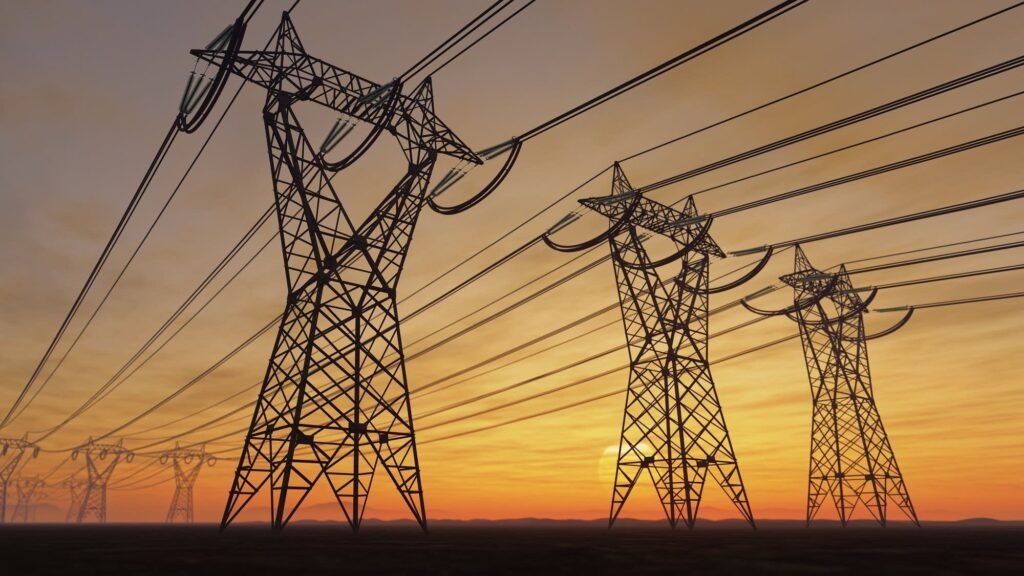This is just one of the stories from our “I’ve Always Wondered” series, where we tackle all of your questions about the world of business, no matter how big or small. Ever wondered if recycling is worth it? Or how store brands stack up against name brands? Check out more from the series here.
Listener William Xuan from Palo Alto, California, asks:
How are utilities priced?
The average electricity bill in the U.S. stands at nearly $150 a month, a price that’s influenced by countless factors, including a utility’s infrastructure expenses, climate change mitigation and geopolitical events.
Most Americans get their power from investor-owned utilities, which are for-profit entities owned by shareholders but regulated by public utility commissions.
State public utility commissions are responsible for approving utility rates, which are proposed by the utilities themselves, said Michelle Graff, an assistant professor at the Georgia Institute of Technology’s School of Public Policy.
When utilities want to change their rates, they present their case in front of the state commission, Graff said.
“These rates that are proposed are designed to ensure that utilities can recover their costs of providing the service,” Graff said.
Those costs can entail building and maintaing infrastructure, general operations, the actual fuel, and the rate of return for the utility’s investors, Graff explained.
“The goal is that the investor-owned utilities and the public utility commissions come to an agreement that is considered to be quote-unquote fair and reasonable for consumers,” Graff said.
Infrastructure costs are rising because utilities need to upgrade power lines, wires and pipes, said Barbara Kates-Garnick, a professor of practice at Tufts University’s Fletcher School.
Your utility bill will generally include fixed, monthly charges you have to pay to cover costs like access to the electricity grid, regardless of how much energy you use. You also face variable charges based on how much energy you’re actually using, Graff said
Some states will have time-of-use rates as well, in which electricity costs more during peak-demand hours, along with seasonal rates that change depending on the time of year, Graff said.
Households across the country are having to pay more for utilities. The average electric bill in the U.S. rose by $22 a month, or $264 a year, between 2021 and 2024.
Because each state is different, it can be hard to pinpoint the exact reasons why prices are going up in a particular area, Graff said. But overall, some factors that can pump up prices include infrastructure costs, a supplier’s ability to produce electricity, the cost of the commodity itself, geopolitical events, climate-related events and inflation.
Connecticut has the highest average monthly electricity bill at $219. One of the reasons it’s so high is because the state’s major suppliers don’t produce their own electricity and have to buy it from out of state.
State regulators approved about $10 billion in net rate increases in 2023, and one big reason for that is climate change. Utilities are working toward making the grid more resilient against weather-related disasters. For instance, wildfire mitigation is one of the primary drivers behind rate hikes in California, according to a recent report from the California Public Utilities Commission’s Public Advocates Office.
Russia’s War on Ukraine also led to rising energy costs around the world after countries stopped importing oil from Russia.
Additionally, electricity demand is rising in the U.S. due to data centers and artificial intelligence, leading to rising prices. The cost of electricity jumped 4.5% over the past year, according to May’s Consumer Price Index.
President Donald Trump also recently signed into a law a massive tax and spending bill which could increase your annual energy bill by $110.
“This bill will not bring relief to electric consumers as promised,” Kates-Garnick said.
The cost of renewables has gone down dramatically, Kates-Garnick said. But Trump’s bill has clawed back incentives for wind and solar energy which means the U.S. will have to reduce the generation of clean energy added to the grid, the Center for American Progress explained.
These additional costs from Trump’s bill will compound the financial struggles man Americans already face. In 2020, 34 million U.S. households said they had difficulty repaying their energy bills.
For those struggling with their energy bills, there are some steps consumers can take to mitigate costs.
You can look for cooling centers in your area and apply for financial assistance opportunities through initiatives like The Low Income Home Energy Assistance Program, Graff said.
“The electricity bill is a really important bill that people have to manage alongside all these other bills. And if they can’t manage that bill, they very often have to make trade offs,” Graff said.

